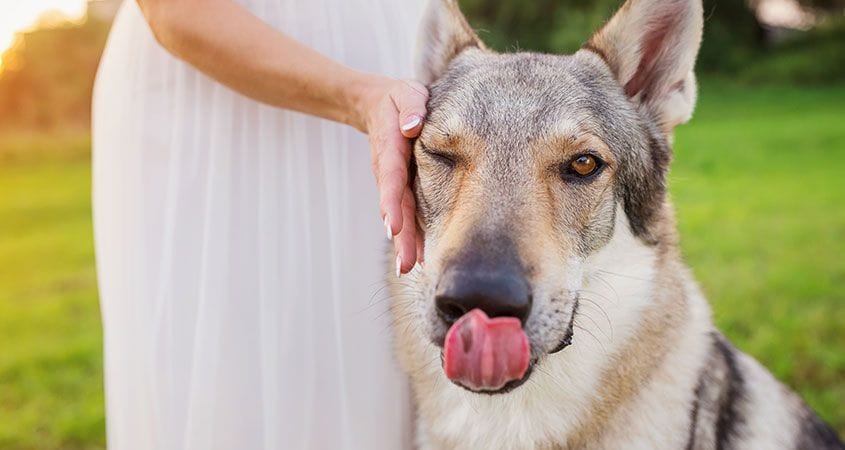Elsewhere, we’ve dealt with the myth that dogs age seven years for every human year, but there’s another popular misconception floating around. This is the belief that dogs only see in black and white.
A Look Through A Dog’s Eyes
Dog’s Vision
While their color vision is somewhat limited and different than ours, they do see color, and a look at the world through a dog’s eyes can provide insight into how they perceive the world.
Humans see the world in color because we (usually) have three types of color receptor cells, or cones, in our eyes. These are sensitive individually to red, green, and blue light, and the different intensities and proportions of those three colors as seen by our eyes are put together by the brain to create the full-color world as we know it.
Some humans, however, are colorblind, which is a generic term for various changes in color perception, depending upon which of the receptors are defective. Two of the more common types are red-green and blue-yellow, in which a person cannot distinguish the two colors named.
Human colorblindness is much more common in men than in women, since it is frequently connected to the X chromosome. Men only have one X, so if it is defective, they’re out of luck. Women have an extra X, so they have to have two defective chromosomes, one from each parent, to have the defect in vision. In fact, women (only) are also susceptible to a visual condition in which they have one extra color receptor, and so can actually see a wider range of colors than people with normal vision.
Color Vision for Dog’s
For dogs, their color vision is most similar to a human with red-green color blindness, although there are other differences. Dogs are less sensitive to variations in gray shades than humans are, as well as only about half as sensitive to changes in brightness.
Dogs also tend to be nearsighted to varying degrees. A poodle, for example, is estimated to have what we would call 20/75 vision in the US (about 6/24 elsewhere in the world).
However, dogs do outperform humans in some visual abilities. Dogs are much more sensitive to motion at a distance — anywhere from 10 to 20 times more sensitive than humans. Their vision is also well-suited to hunting during dawn and dusk.
Combining their motion and twilight sensitivity with a wider degree of peripheral vision than humans, a dog’s eyes are perfectly suited for hunting down fast-moving prey — but did their vision evolve this way to make them better hunters?
How Did Dog’s Vision Evolve?
The answer to that question is a little more complicated than just yes or no. As it turns out, full color vision arose fairly early in the evolutionary development of the eye. Among some fish, reptiles, birds, and insects, four or more different color receptors are not uncommon. Butterflies have five, but the undisputed winner in the color vision category is probably the mantis shrimp, which has an incredible sixteen different color receptors in its eyes.
Along the way, mammals began to lose all the extra receptors until only two remained. Since this didn’t put dogs or other predators at a particular disadvantage for hunting, it didn’t make much of a difference. It was only later on that some primates, including humans, re-evolved and added the additional receptor that gives us full color vision.


Cesar and fans at the National Family Pack Walk,And as your dog sees it.
as you see it.
So, the next time your dog can’t find the red ball that you just threw onto a green lawn, remember that their world, while still full of vivid blues and yellows, is probably a bit less colorful than your own. But don’t feel sorry for dogs because of this. What they lack in visual ability, they make up for in sense of smell. Their noses have been estimated to be up to 100 million times more sensitive than yours. Their eyesight may be limited, but they can smell in 3D, IMAX, and TechnicolorTM.











